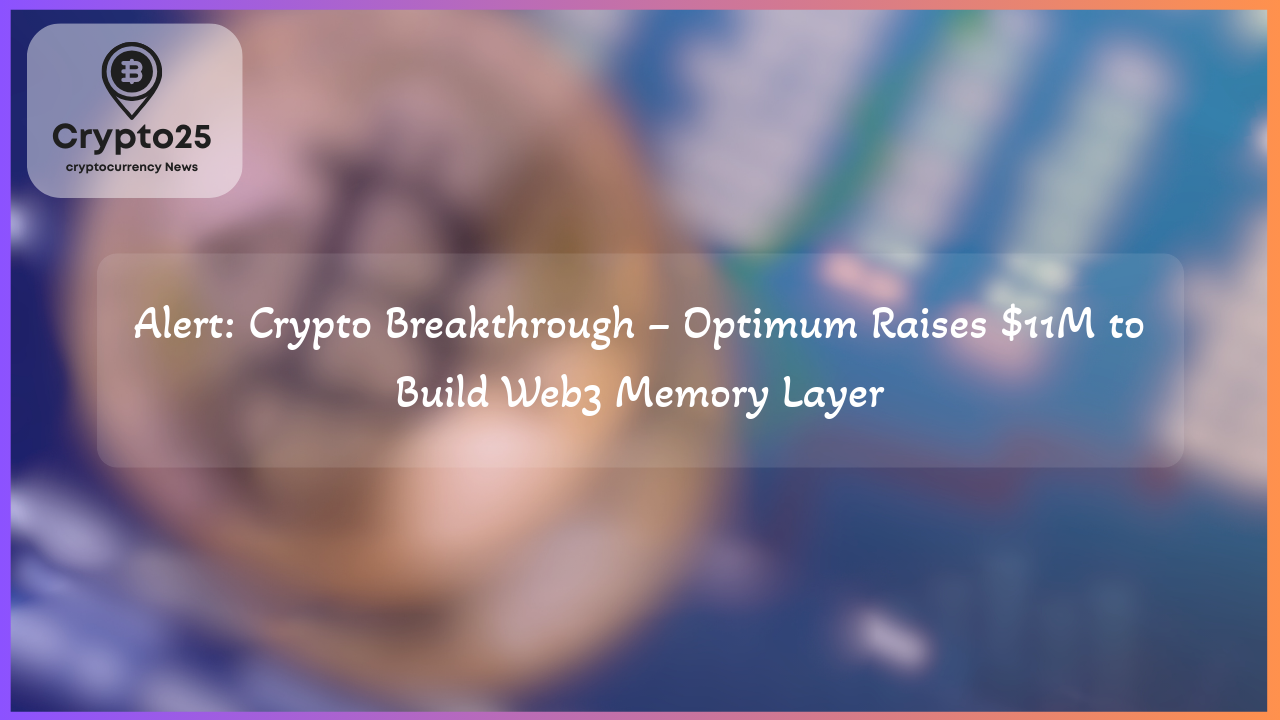
The world of blockchain and decentralized technology continues to evolve, addressing critical inefficiencies with innovative solutions. Recently, Optimum, a pioneering decentralized memory layer for blockchains, made headlines by raising $11 million in a seed funding round. With its roots originating from prestigious institutions like Harvard and MIT, Optimum is designed to transform how data is stored, accessed, and disseminated across decentralized systems.
### Optimum: Redefining Blockchain Memory Layers
The blockchain ecosystem has often been described as a decentralized global computing network. However, despite significant advancements in processing capabilities, the memory layer—critical for data storage and propagation—remains underdeveloped. This is where Optimum comes into play, positioning itself as the “missing memory layer” for blockchains. According to the company’s vision, efficient, cost-effective, and decentralized data management can streamline operations across Layer 1 (L1) and Layer 2 (L2) networks.
At the heart of Optimum’s innovation lies Random Linear Network Coding (RLNC), a groundbreaking approach to decentralized coding for distributed systems. Developed by Muriel Médard, an MIT professor and one of the project’s originators, RLNC ensures that data propagation, storage, and retrieval are not only faster but also optimized for scalability. Médard likens Optimum’s role in blockchain to the memory component of a computer, emphasizing that the absence of scalable memory solutions now contributes to inefficiencies such as overburdened nodes and delayed transactions.
The recently concluded $11 million seed funding round marks a significant milestone for Optimum as it ventures further into the world of commercial crypto solutions. Led by venture firms such as 1kx, the round included participation from prominent names like Robot Ventures, Finality Capital, CMT Digital, and Animoca Brands among others, illustrating strong investor confidence in the project’s potential.
### How Optimum is Solving Blockchain Inefficiencies
Blockchain networks currently face widespread inefficiencies in data handling due to outdated infrastructures. Key challenges include reliance on traditional gossip protocols, congested mempools, and bloated nodes that complicate data retrieval processes. Médard and the team behind Optimum have identified these bottlenecks as critical areas for improvement. By leveraging RLNC technology, Optimum seeks to eliminate duplicate data propagation, reduce delays, and provide faster access to critical blockchain information.
Optimum’s memory infrastructure also addresses concerns regarding cost. Bloated blockchain nodes not only increase overheads but also create barriers to entry for validators and node operators. With a more streamlined data management process, the project aims to make blockchain operations more efficient and accessible, promoting greater decentralization. These features make Optimum a potentially game-changing solution for both blockchain developers and the broader Web3 community.
Currently live on a private testnet, Optimum is inviting industry participants, including L1s, L2s, node operators, and validators, to experience the benefits of its decentralized memory layer firsthand. Early adoption will allow various stakeholders to assess how this innovative solution can complement their blockchain ecosystems.
| Title | Details |
|---|---|
| Market Cap | $1.2 Trillion |
### What Optimum’s Success Means for the Future of Web3
The launch of Optimum is part of a broader shift toward enhancing the foundational layers of blockchain technology. Projects like this underscore the importance of adopting next-generation tools that prioritize scalability, cost-efficiency, and full decentralization. By addressing memory-layer inefficiencies, Optimum isn’t just solving a technical issue but is also enabling blockchain to realize its full potential as a decentralized, global computing network.
Muriel Médard’s analogy of Web3 as a “world computer” highlights the intricate interplay between computation and memory. While blockchain developers have excelled at designing robust operating systems for decentralized networks, the addition of a scalable memory layer could unlock unprecedented functionality. From faster transaction finalization to reducing barriers for node participation, Optimum has positioned itself as a key player in creating a more robust and efficient blockchain ecosystem.
As Optimum transitions from academia to commercialization, the $11 million funding will undoubtedly accelerate its roadmap. This marks a pivotal moment for the team as they move toward public testing and greater visibility within the crypto space. Early adopters have the unique opportunity to leverage this cutting-edge technology, setting the stage for widespread implementation and redefining what is possible in decentralized networks.
With the advent of game-changing solutions like Optimum, the blockchain industry is poised to tackle its most persistent challenges. As more projects embrace decentralized memory layers, Web3 will not only continue to innovate but also deliver on its promise of creating a seamless, decentralized world of interconnected data and applications.
